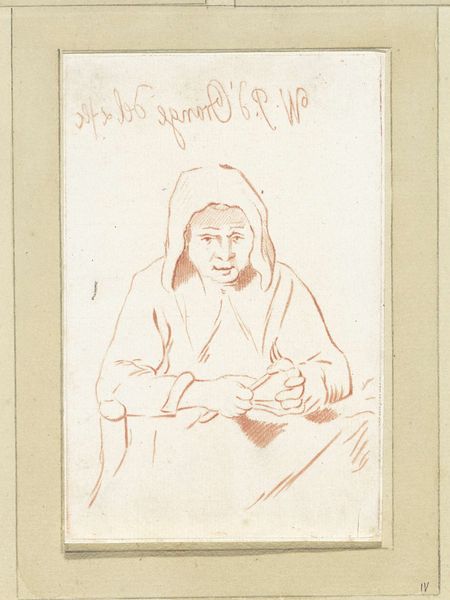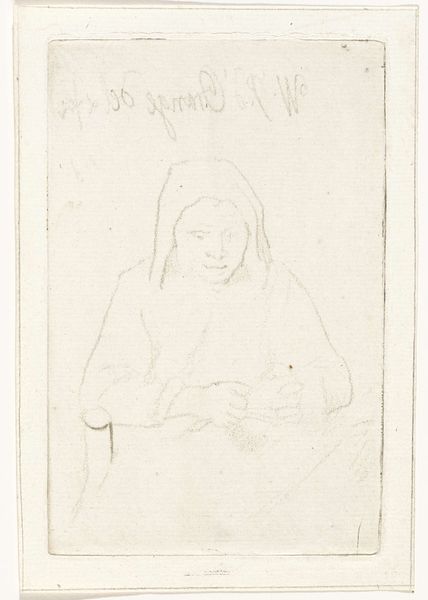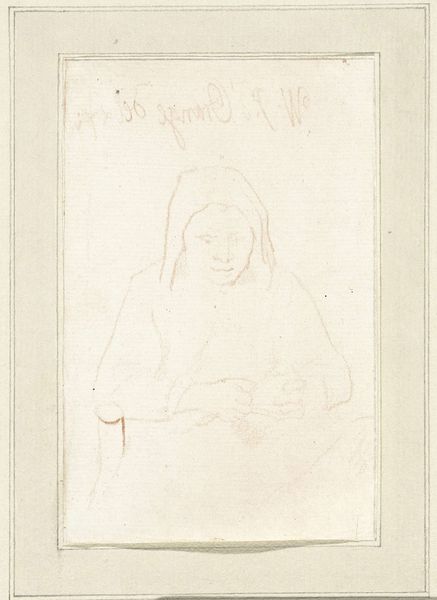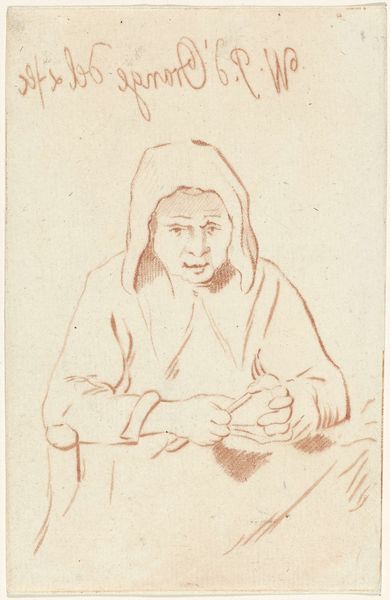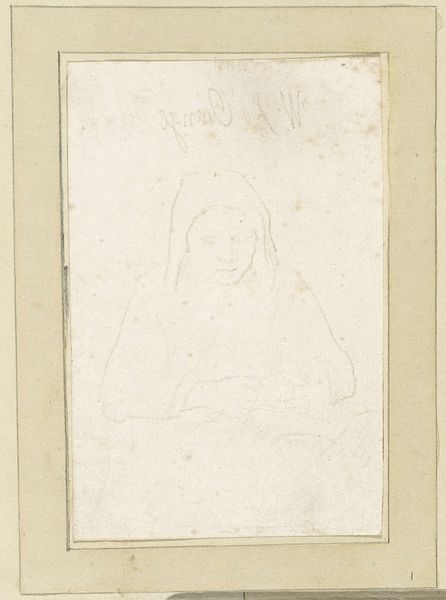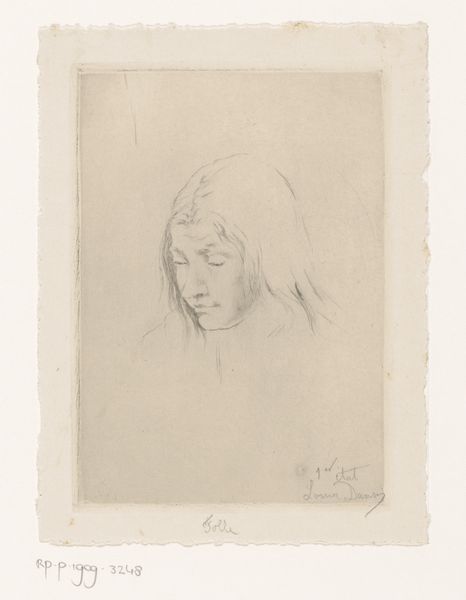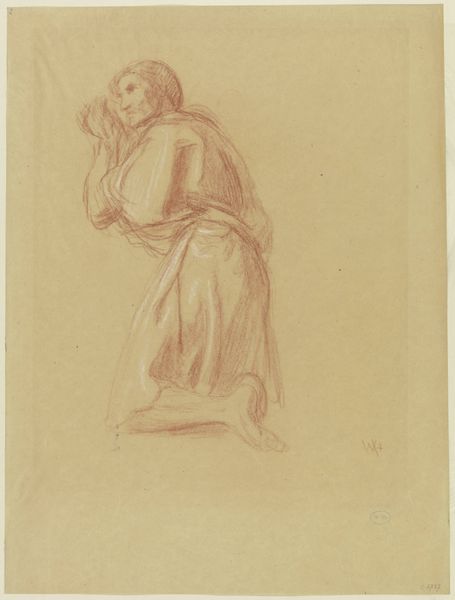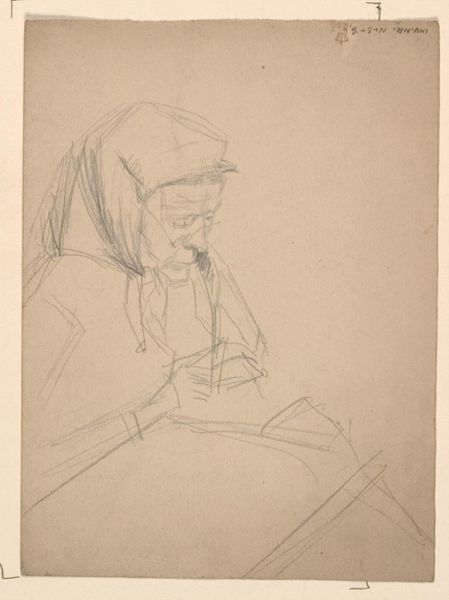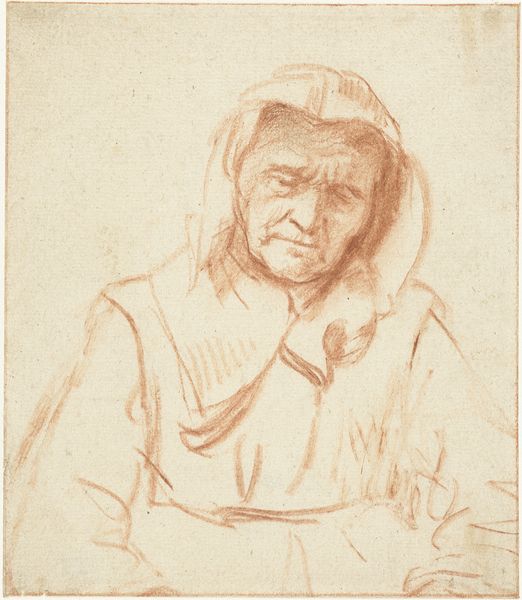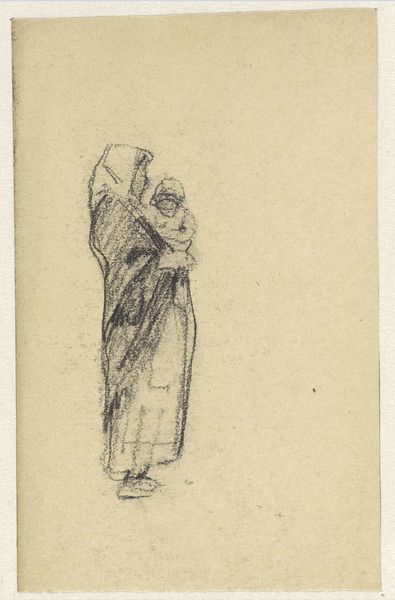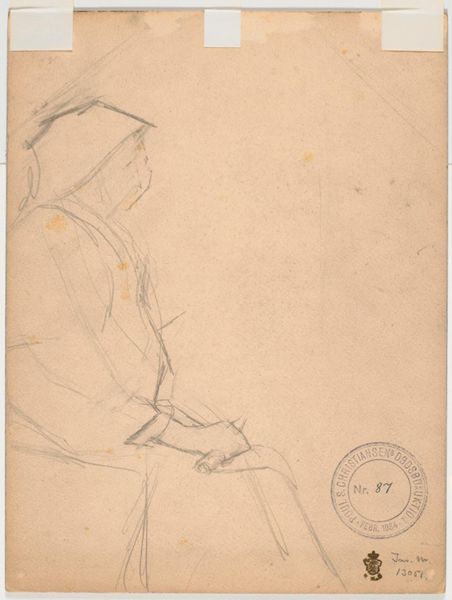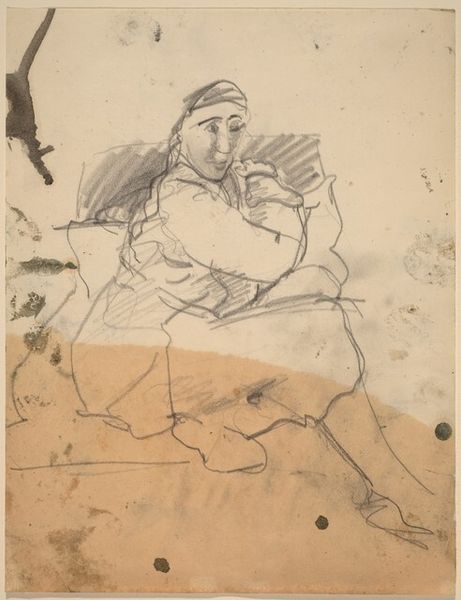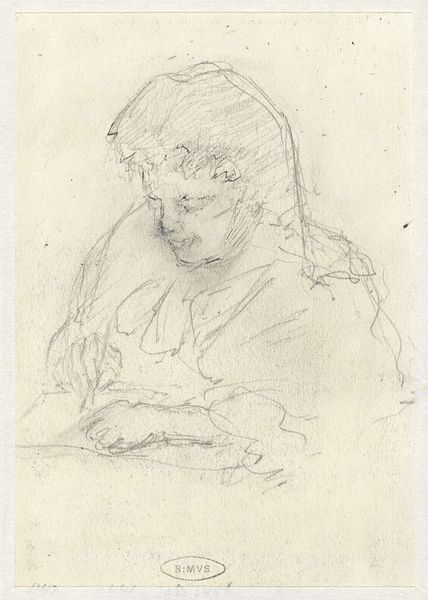
drawing, paper, pen
#
portrait
#
drawing
#
paper
#
pen
#
portrait drawing
#
genre-painting
Dimensions: height 140 mm, width 90 mm
Copyright: Rijks Museum: Open Domain
Editor: This drawing, "Zittende oude vrouw," or "Seated Old Woman," was created by Willem V in 1773. It’s pen on paper and something about it, perhaps the subject’s gaze, feels surprisingly direct for a genre painting. What stands out to you? Curator: Look at the penmanship. It’s economical, functional even, a means to an end rather than an aesthetic pursuit in itself. We can read it as evidence of the socio-economic dynamics in 18th century Dutch society. Editor: Socio-economic dynamics? How so? Curator: Well, Willem V, as Prince of Orange-Nassau, was part of the ruling class. A pen drawing, like this one, involved specific materials and techniques available to those with means. The paper itself, the quality of the ink, the leisure time required for its creation – all point to class privilege and power. Do you see how the drawing's subject – an elderly woman, likely of a lower social stratum – contrasts sharply with the artist's privileged background? Editor: Yes, now that you mention it, there's a contrast there that's really thought-provoking. Is there any way we can really know what this pens' texture feels like against this paper? Or are we meant to ponder it through the drawing? Curator: Exactly. Moreover, consider the historical context of the artwork's creation. The rise of a market economy in the 18th century affected the availability of different art materials to people. The division of labor influenced who was creating images of genre paintings of lower class women such as this one, how, and for whom. The availability of such materials played an important role on the subject, such as this one. Editor: So, understanding the historical circumstances under which a piece was created helps reveal deeper insights beyond the surface of the image itself. Curator: Precisely. Examining the work through a materialist lens allows us to question the nature of the materials in its original moment and challenges preconceived notions about "high" art and its relationship to everyday life and the division of classes. Editor: That's given me a completely new way of considering this work. It’s much more complex and nuanced than I first realized.
Comments
No comments
Be the first to comment and join the conversation on the ultimate creative platform.
